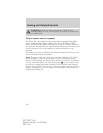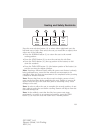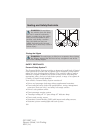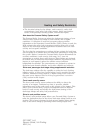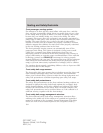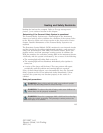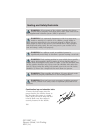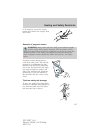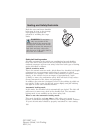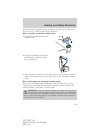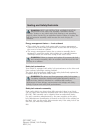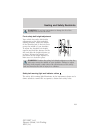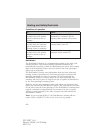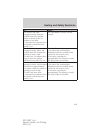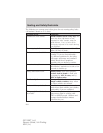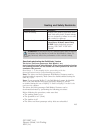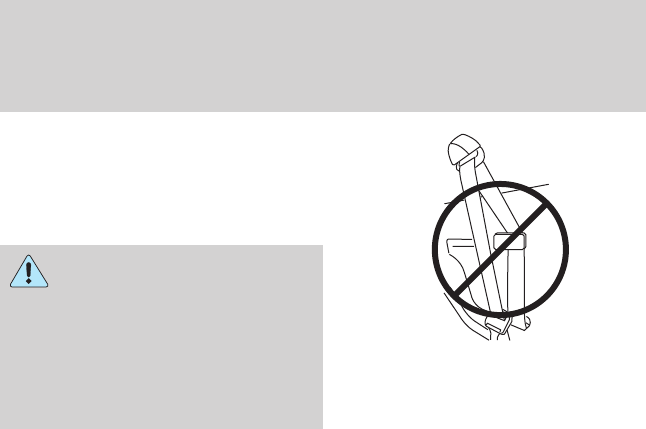
Both the outer and inner shoulder
belts must be kept in the stowage
clip together to prevent the
potential of wrinkling the cargo
shade.
WARNING: Do not stow
only one portion of the
shoulder belt in the stowage clip.
Wearing the shoulder belt in this
condition increases the amount of
belt slack and may reduce the
effectiveness of the safety belt in
the event of a collision.
Safety belt locking modes
All safety restraints in the vehicle are combination lap and shoulder
belts. The driver safety belt has the first locking mode and the front
outboard passenger and rear seat safety belts have both types of locking
modes described as follows:
Vehicle sensitive mode
This is the normal retractor mode, which allows free shoulder belt length
adjustment to your movements and locking in response to vehicle
movement. For example, if the driver brakes suddenly or turns a corner
sharply, or the vehicle receives an impact of approximately 5 mph
(8 km/h) or more, the combination safety belts will lock to help reduce
forward movement of the driver and passengers.
In addition, the retractor is designed to lock if the webbing is pulled out
too quickly. If this occurs, let the belt retract slightly and pull webbing
out again in a slow and controlled manner.
Automatic locking mode
In this mode, the shoulder belt is automatically pre-locked. The belt will
still retract to remove any slack in the shoulder belt. The automatic
locking mode is not available on the driver safety belt.
When to use the automatic locking mode
This mode should be used any time a child safety seat, except a
booster, is installed in passenger front or rear seating positions. Children
12 years old and under should be properly restrained in a rear seating
Seating and Safety Restraints
198
2011 MKT (mkt)
Owners Guide, 1st Printing
USA (fus)



